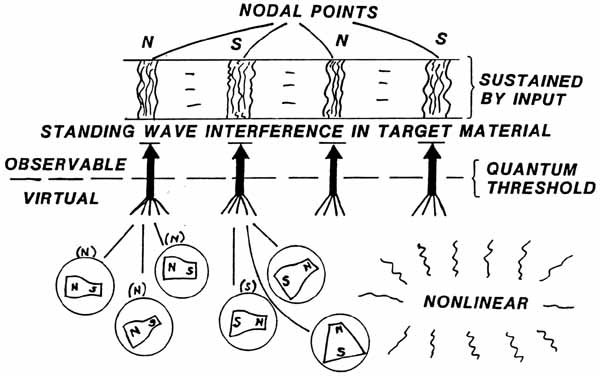Now
let us look at a non-linear case of the same sort of thing. Now
the bags are still around the little virtual magnets, but they are
nonlinear. This means that, to an observer outside the bag, one
pole seems bigger or more powerful than the other. In other words,
to the quantum observer, this bag appears to be a magnetic monopole at a
point.
In the flux
still on and off each observable spinning charged mass, we now have a
steady component of "monopoles". If we have a standing
scalar wave present in a physical material in which the nonlinearity
exists -- and the scalar waves can even be PRODUCING that nonlinearity
-- we will have nodes available at which the monopoles will congregate
and emerge and interact.
North
monopoles will congregate at one node, while south monopoles will
congregate at the next, and so on in alternating fashion.
That means
that, at anyone node, monopoles of the same kind are steadily being
"deposited" in the material. These monopoles strongly
repel each other, and so the material at that node is increasingly
stressed in a tensile fashion.
Eventually
the material will be torn apart at the node,
stress relieving the situation. Movement of the material will
release the nonlinear condition, stopping monopole production and deposit.
However, at a break node, the same kind of magnetic pole will
appear on each side of the break.
That
is, the breaks will be N-N, S-S, N-N, S-S, etc.
An
ordinary magnetic does not do that when it breaks. Instead, it
breaks N-S, N-S, etc.
Next Slide
|

